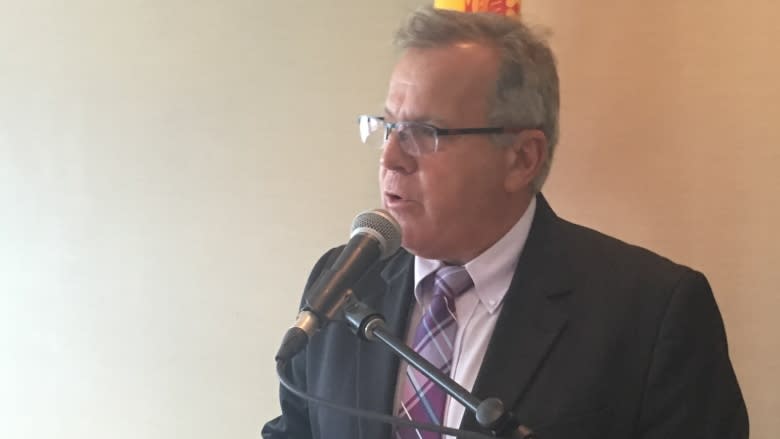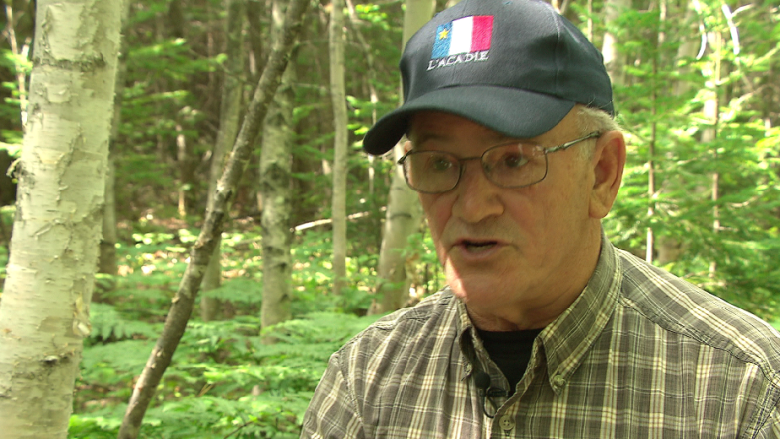Liberals' 11th-hour forest strategy a product of talks — here and there
It was three years and 11 months coming, but big questions remain about the Liberal government's review of the previous provincial government's forest management strategy.
The results of the review were announced Tuesday.
They leave in place controversial Crown forest cutting allocations set by the previous government of David Alward and they increase the amount of forest being set aside for conservation by 1,500 square kilometres.
Energy and Resource Development minister Rick Doucet addressed the delay in releasing the review in his opening remarks Tuesday by claiming much of the department's energy has been devoted to solving trade tariffs issue with the United States.
But the looming provincial election — the writ is to be issued next Thursday — is a more likely explanation, according to some, including Green Party Leader David Coon and former Progressive Conservative natural resources minister Bruce Northrup.
Until Tuesday, a major promise of the 2014 election campaign had been unaddressed.
"I find it kind of astonishing that they came to this eight days before the election is called," Northrup said.
"Now, all of a sudden, the minister just comes out of the blue and says — without even consulting with anybody — just came out and said this is what we're going to do."
Few details at announcement
Doucet offered no details when asked Tuesday how a 20 per cent increase in cutting allocations given to the forestry companies can remain unchanged even as so much land is moved into conservation protection.
"Basically the way we're going to do it is we're all working together," Doucet said. "We think all hands have to be on deck and we're going to work together on that."
A senior staff person from the department was in the room during Doucet's announcement, and was made available to members of the media so long as his remarks are not attributed.
He said computer modelling forecasts are projecting much larger volumes of wood will be available from Crown plantations than was thought possible five years ago.
It's unclear why Doucet could not, or would not, say that in his response to media questions.
The review by his department, he said, was completed after "dialogue with dozens of groups and individuals that include environmentalists, industry representatives, private woodlot owners and biologists."
But in what surely must have been an awkward moment for the government, Doucet's words were quickly followed by a news release from Jason Limongelli of the industry's biggest player, J.D. Irving Ltd., saying the announcement "is a surprise and concerning in the absence of any consultation."
Some consulted, some not
A group representing Mi'kmaq chiefs also claimed it was "not adequately consulted" on the plan.
Other groups, like the New Brunswick Federation of Woodlot Owners, and the Canadian Parks and Wilderness Society say they were unaware the contact they did have with provincial officials was considered "consultations" for a new forest management strategy.
"It wouldn't be a traditional way that I would think of consultation," said Roberta Clowater, executive director of wilderness group in New Brunswick.
"We asked for meetings with the minister and the department staff at varying points and we did meet with them. But we were the ones who made the overtures, it wasn't a formal consultation process in any way."
Two important groups claim they were consulted, however.
Forest New Brunswick represents many industry players with the notable exception of JD Irving Ltd.
"I would say there was obviously engagement with industry, industry as represented by Forest New Brunswick," said executive director Mike Legere.
"And I would say that we had frank, fairly informal discussions about what could be done."
On the environmental side, the Conservation Council of New Brunswick's executive director Lois Corbett said her organization was consulted "all the way through," and the department listened to its concerns about adding to conservation areas around existing protected areas and widening buffer zones along streams and rivers on Crown land.
Consultation clarification issued
When asked for clarification on the issue of consultation, the department issued a brief statement:
"Staff and officials in the Department of Energy and Resource Development regularly meet with stakeholders in the sector, including First Nations, landowners, forestry companies and environmental groups," said Mary-Anne Hurley-Corbyn.
"Since the fall of 2014 there have been hundreds of meetings with stakeholders. All of these meetings touch on matters that are reflected in the review, whether that be questions about wood supply, conservation, forestry practices or others."
Former minister Northrup also claims the decision by the Alward government to decrease the amount of protected Crown conservation land to 23 per cent from 28 per cent was unnecessary and the decision by Brian Gallant's Liberal to put the land back into conservation demonstrates that.
Landholders not protected
He pointed out, too, that there has always been plenty of wood available on private woodlots but there are no provisions in either government's strategy to ensure private landholders get a fair deal from mill owners who also have access to wood from Crown forests.
It's an observation echoed this week by Jean-Guy Comeau, vice-president of the New Brunswick Federation of Woodlot owners.
The forestry companies "always want more wood than what they need," said Comeau. "This way they don't have to bargain with woodlot owners, they don't have to bargain with me. \
"Right at the moment, all the corporations in New Brunswick, if they decide that they don't want to buy a stick of wood from Jean Guy Comeau, there's not one thing that he can do. We had legislation that protected the woodlot owner, it's not in place there now."



